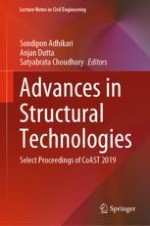2021 | OriginalPaper | Chapter
Design and Performance Criteria for Fire-Resistant Design of Structures––An Overview
Authors : Nitant Upasani, Mansi Bansal, Ashirbad Satapathy, Sanket Rawat, G. Muthukumar
Published in: Advances in Structural Technologies
Publisher: Springer Singapore
Activate our intelligent search to find suitable subject content or patents.
Select sections of text to find matching patents with Artificial Intelligence. powered by
Select sections of text to find additional relevant content using AI-assisted search. powered by
